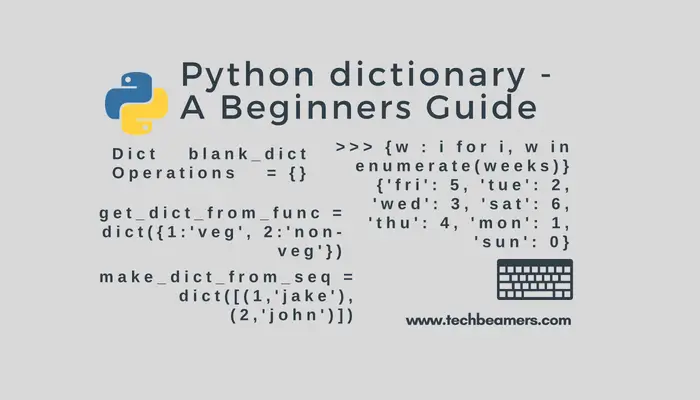How to multiply 2/3 by 1/3. What is 2/3 by 1/3 in fraction form? 2/3 by 1/3 as a fraction. Note: The resulting fraction is in the reduced form. A reduced fraction is a common fraction in its simplest possible form. The dict constructor creates a dictionary in Python. I have two dictionaries, but for simplification, I will take these two: x = dict(a=1, b=2) y = dict(a=2, b=2) Now, I want to compare whether each key, value pair in x ha.
- Python 3 Basic Tutorial
- Python 3 Advanced Tutorial
- Python 3 Useful Resources
- Selected Reading
Each key is separated from its value by a colon (:), the items are separated by commas, and the whole thing is enclosed in curly braces. An empty dictionary without any items is written with just two curly braces, like this: {}.
Keys are unique within a dictionary while values may not be. The values of a dictionary can be of any type, but the keys must be of an immutable data type such as strings, numbers, or tuples.
Accessing Values in Dictionary
To access dictionary elements, you can use the familiar square brackets along with the key to obtain its value. Following is a simple example −
When the above code is executed, it produces the following result −
If we attempt to access a data item with a key, which is not a part of the dictionary, we get an error as follows −
Dictionaries 1 3 3 X 2 1
When the above code is executed, it produces the following result −
Updating Dictionary
You can update a dictionary by adding a new entry or a key-value pair, modifying an existing entry, or deleting an existing entry as shown in a simple example given below.
When the above code is executed, it produces the following result −
Delete Dictionary Elements
You can either remove individual dictionary elements or clear the entire contents of a dictionary. You can also delete entire dictionary in a single operation.
To explicitly remove an entire dictionary, just use the del statement. Following is a simple example −

This produces the following result.
An exception is raised because after del dict, the dictionary does not exist anymore.
Note − The del() method is discussed in subsequent section.
Properties of Dictionary Keys
Dictionary values have no restrictions. They can be any arbitrary Python object, either standard objects or user-defined objects. However, same is not true for the keys.
There are two important points to remember about dictionary keys −
(a) More than one entry per key is not allowed. This means no duplicate key is allowed. When duplicate keys are encountered during assignment, the last assignment wins. For example −
When the above code is executed, it produces the following result −
(b) Keys must be immutable. This means you can use strings, numbers or tuples as dictionary keys but something like ['key'] is not allowed. Following is a simple example −
When the above code is executed, it produces the following result −
Built-in Dictionary Functions and Methods
Python includes the following dictionary functions −
| Sr.No. | Function & Description |
|---|---|
| 1 | cmp(dict1, dict2) No longer available in Python 3. |
| 2 | len(dict) Britains got talent games. Gives the total length of the dictionary. This would be equal to the number of items in the dictionary. |
| 3 | str(dict) Produces a printable string representation of a dictionary |
| 4 | type(variable) Returns the type of the passed variable. If passed variable is dictionary, then it would return a dictionary type. |
Disk drill pro enterprise 2 4 438 download free. Python includes the following dictionary methods −
Dictionaries 1 3 3 X 2 3
| Sr.No. | Method & Description |
|---|---|
| 1 | dict.clear() Removes all elements of dictionary dict |
| 2 | dict.copy() Returns a shallow copy of dictionary dict |
| 3 | dict.fromkeys() Create a new dictionary with keys from seq and values set to value. |
| 4 | dict.get(key, default=None) https://reviews-download.mystrikingly.com/blog/omniplan-pro-3-3-download-free. For key key, returns value or default if key not in dictionary https://soft-its.mystrikingly.com/blog/real-deal-affiliate. |
| 5 | dict.has_key(key) Removed, use the in operation instead. |
| 6 | dict.items() Returns a list of dict's (key, value) tuple pairs |
| 7 | dict.keys() Returns list of dictionary dict's keys |
| 8 | dict.setdefault(key, default = None) Similar to get(), but will set dict[key] = default if key is not already in dict |
| 9 | dict.update(dict2) Adds dictionary dict2's key-values pairs to dict |
| 10 | dict.values() Returns list of dictionary dict's values |

